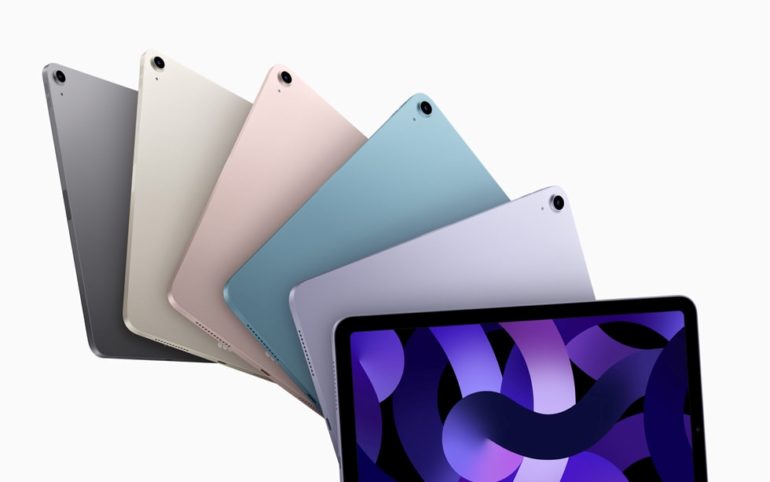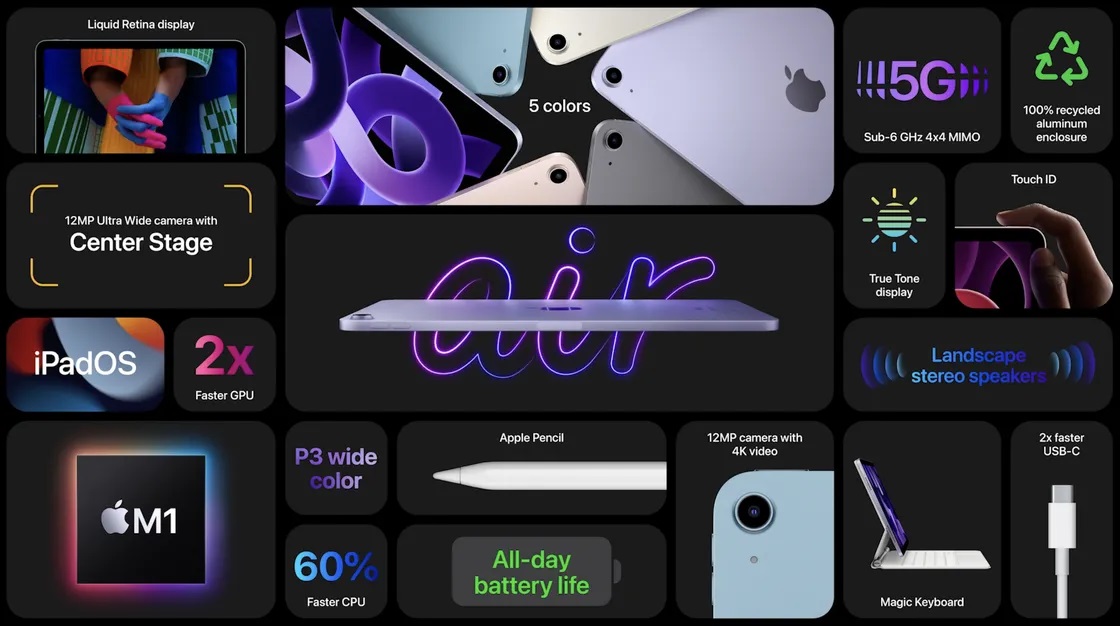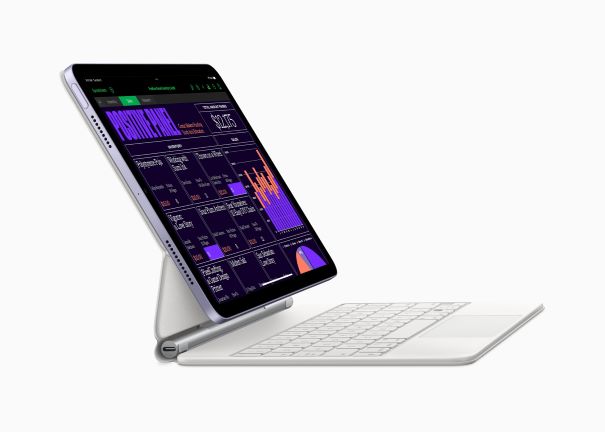Apple has unveiled an update to the iPad Air, over a year and a half after redesigning the tablet in the style of the iPad Pro. While much of that redesign remains, the new iPad Air model features a speedier M1 CPU first seen in Apple’s Macs. Additionally, it supports 5G, and the USB-C connector is up to twice as fast, with data transfer speeds of up to 10Gbps.
It will begin at $599 for the Wi-Fi-only variant and go to $749 for the Wi-Fi and cellular device. It will be available in 64GB or 256GB storage capacities and will be available in grey, pink, purple, blue, and a silver/gold cross Apple is calling “starlight.” Preorders begin on Friday, March 11, and the tablet will be available for purchase on March 18.
Apple claims that the iPad Air’s M1 processor, which is also included in the company’s latest iPad Pro, features an eight-core CPU that is up to 60% quicker than the A14 Bionic engine present in the previous iteration. It features an eight-core GPU that delivers double the graphics performance of its predecessor.
Its front-facing camera has also been upgraded to a 12-megapixel sensor (up from 7 megapixels last time), and it now supports Apple’s Center Stage function, which is designed to keep you in the picture automatically during calls. The rear camera has the same 12-megapixel resolution as last time. The new iPad Air’s 10.9-inch display features a peak brightness of 500 nits and HDR compatibility, but no mention of ProMotion. The iPad Air features dual speakers in the landscape orientation.
As with its predecessor, the new iPad Air is compatible with both the $129 Apple Pencil, which magnetically attaches to the device, and the $299 Magic Keyboard. Additionally, it is compatible with both the $179 Smart Keyboard Folio and the $79 Smart Folio covers. Its biometric security is provided by Touch ID, which is integrated into the power button.
The iPad Air is Apple’s entry-level tablet, having been updated in 2020. The Air has a smaller display with a lower refresh rate and a slower processor than the Pro last time around. However, the iPad Air retained a number of the iPad Pro’s other features, including a USB-C connector and support for Apple’s Magic Keyboard and Pencil. As a result, the Air became a great value-for-money alternative to the Pro. That is even more true this time around, as it is also powered by an M1 microprocessor.



